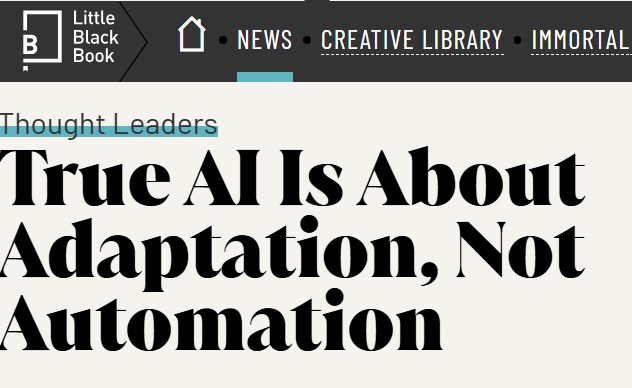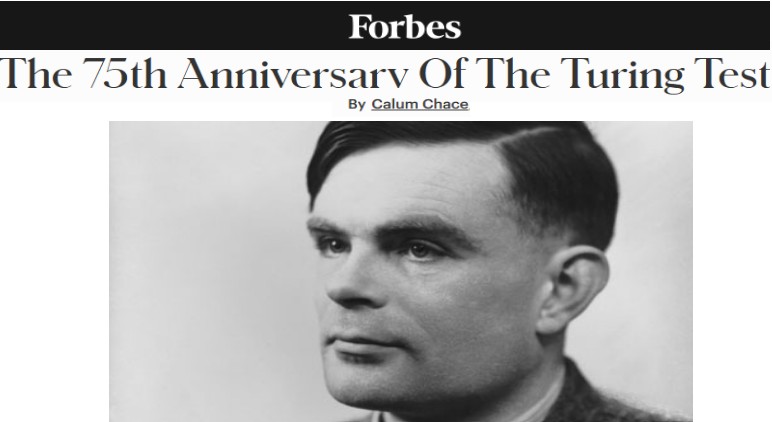First published in LBB, 13 October 2025
For brands to succeed, they must move beyond the hype and adopt a practical framework for AI focused on creating value, not just mimicking human behaviour, writes WPP’s chief AI officer Daniel Hulme.
In the race to adopt artificial intelligence, many business leaders are operating with a flawed map. The landscape – and social media – is crowded with self-proclaimed experts and simplistic definitions, creating a fog of confusion that leads to flawed strategies and wasted investment. Of course the enthusiasm for AI is welcome, but a surface-level understanding is detrimental to progress.
To place the right bets on AI, we must first clear the air. It’s time to move the conversation beyond the hype and establish a practical framework for what AI is, what it isn’t, and where the true value lies for brands.
The two great AI misconceptions
Much of what is labelled AI today is simply sophisticated automation. An automated system that receives the same data will produce the same output every time. It is powerful and incredibly valuable for efficiency, but it is not intelligent. It does not learn or change.
The second misconception is that the goal of AI is to replicate human intelligence. This is a neat but limiting benchmark. An AI that could navigate the world with the adaptive intelligence of a bumblebee would be a monumental achievement. Like humans, large language models (LLMs) are excellent at knowing things and communicating what they know. They are not yet good at making complex, explainable decisions. For marketers, this means that while generative AI is a powerful partner for content creation, it cannot yet be relied upon for strategic decision-making without expert human oversight.
A better definition: Goal-directed adaptive behaviour
After more than two decades of building AI systems, the most useful definition of intelligence remains ‘goal-directed adaptive behaviour’.
The key word is adaptive. An intelligent system doesn’t just act; it learns from the outcome of its actions and adjusts its behaviour accordingly. As Charles Darwin and Albert Einstein both noted, the ultimate measure of intelligence is the ability to adapt. Building these truly adaptive systems is the pinnacle of AI – and it is immensely difficult. But it is where sustainable competitive advantage will be found.
A practical framework: The six applications of AI
Instead of getting lost in definitions, I believe it is more valuable to think of AI in terms of its practical applications. Nearly every business friction can be addressed by one of six core functions of AI:
1. Task automation: Using systems to free humans from mundane, repetitive and structured tasks (e.g. RPA, chatbots, object recognition).
2. Content generation: Using generative AI to create text, images, video and music, accelerating creativity and production.
3. Human representation: Simulating human-like behaviour to make predictions or substitute for real humans in specific situations.
4. Insight extraction: Using machine learning to find and explain meaningful patterns in vast data sets.
5. Decision making: Using algorithms to help us make better decisions and predict their consequences.
6. Human augmentation: Extending human capabilities through technologies like digital twins or brain-computer interfaces.
Each of these applications presents an opportunity for brands, but each also raises its own ethical and safety questions that must be addressed from the outset.
How to build an adaptive AI strategy
To move from theory to practice, leaders must focus on building a culture and strategy centred on adaptation.
Define the business friction first: Don’t start with the technology. Start with the specific, high-value problem you need to solve across your operations, from supply chain to customer experience.
Distinguish between automation and adaptation: Use automation for immediate efficiency gains, but invest in truly adaptive AI to build long-term, evolving advantages that competitors cannot easily replicate.
Build a culture of co-operation: Successful AI is not built in a silo. It requires deep collaboration between AI talent and domain experts from across marketing, commerce, and technology to ensure solutions are both technically sound and commercially relevant.
Prioritise responsible AI from day one: Embed ethical considerations and safety protocols into every application. In a world of algorithms, building trust is not just a compliance issue – it is your most durable competitive advantage.
This framework is born from two decades of applying AI in production for some of the world’s biggest organisations, and I am deeply motivated to ensure that marketing leaders place the right bets on AI. The most valuable bet is on adaptation. The future of marketing will not be defined by machines that simply mimic humans. It will be led by brands that harness the power of adaptive AI to understand and respond to their customers in real time. This is the new benchmark for intelligence, and it is the core of creative transformation.




